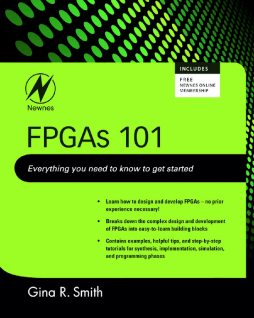
Additional Information
Book Details
Abstract
FPGAs (Field-Programmable Gate Arrays) can be found in applications such as smart phones, mp3 players, medical imaging devices, and for aerospace and defense technology. FPGAs consist of logic blocks and programmable interconnects. This allows an engineer to start with a blank slate and program the FPGA for a specific task, for instance, digital signal processing, or a specific device, for example, a software-defined radio. Due to the short time to market and ability to reprogram to fix bugs without having to respin FPGAs are in increasingly high demand.
This book is for the engineer that has not yet had any experience with this electrifying and growing field. The complex issue of FPGA design is broken down into four distinct phases - Design / Synthesis / Simulation / Place & Route. Numerous step-by-step examples along with source code accompany the discussion. A brief primer of one of the popular FPGA and hardware languages, VHDL, is incorporated for a simple yet comprehensive learning tool. While a general technology background is assumed, no direct hardware development understanding is needed. Also, included are details on tool-set up, verifaction techniques, and test benches. Reference material consists of a quick reference guide, reserved words, and common VHDL/FPGA terms.
- Learn how to design and develop FPGAs -- no prior experience necessary!
- Breaks down the complex design and development of FPGAs into easy-to-learn building blocks
- Contains examples, helpful tips, and step-by-step tutorials for synthesis, implementation, simulation, and programming phases
"FPGAs 101 provides somebody who has very little exposure to FPGAs or VHDL, but some familiarity with digital design, with an introduction to FPGA design. The first chapter, ‘Getting Started,’ provides a beginner’s overview of programming, including how to name variables correctly, how to leave good comments, and how to find a good text editor. Later in the chapter, Smith begins an overview of the hardware description language, which extends until the end of Chapter 2. These chapters are written for those with no VHDL experience and are intended to provide a learn-by-example tutorial for implementing simple digital designs using VHDL, such as combinational logic circuits, flops, and counters." - reviewed on the Ethical Hacker website
"FPGAs 101 provides somebody who has very little exposure to FPGAs or VHDL, but some familiarity with digital design, with an introduction to FPGA design." - Jonathan A Feucht, en-genious.net
